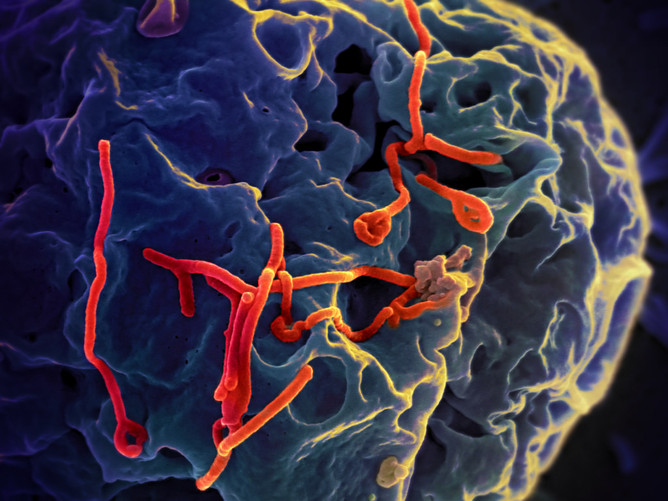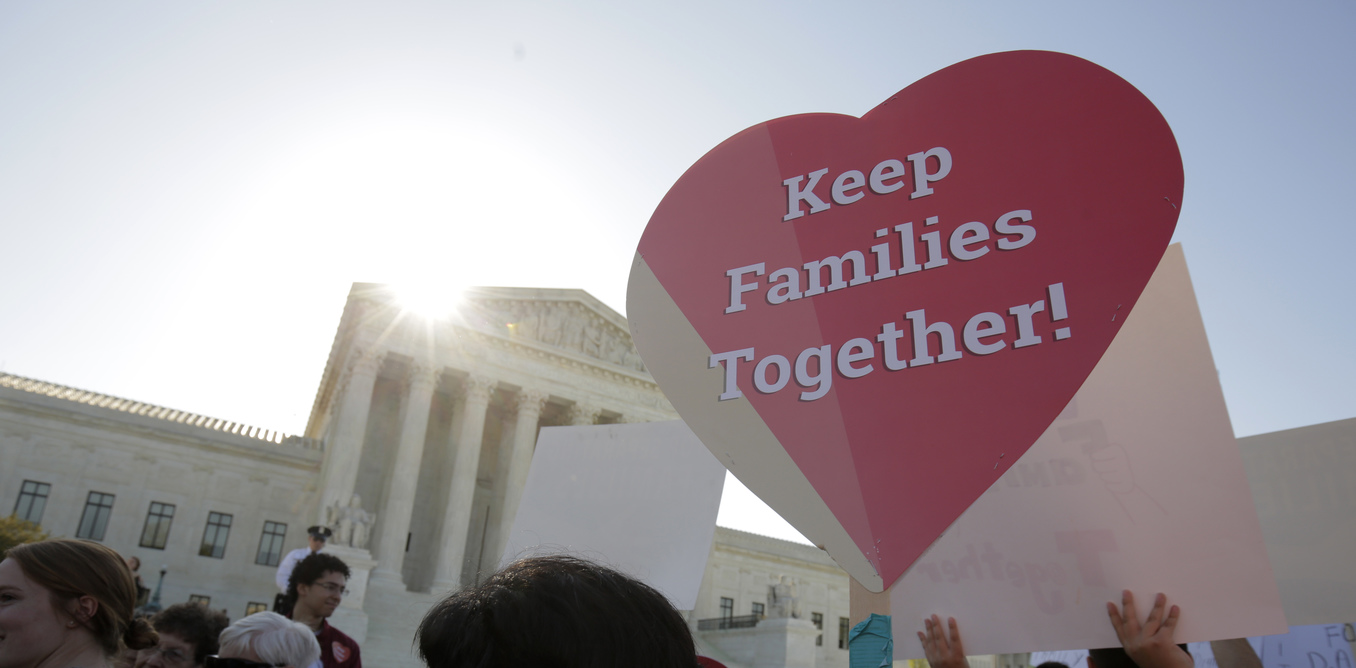“We are just waiting,” says Lisa, a 19-year-old college student, the anxiety palpable in her voice. Lisa is a U.S. citizen, born and raised in South Texas. Her parents and older brother, however, are undocumented.
The entire family’s lives may be turned upside down in just a few days.
This month, the Supreme Court will issue a decision in the case of United States v. Texas. The court will decide on whether to uphold two immigration initiatives announced by President Barack Obama in 2014 – Deferred Action for Parents of Americans and Lawful Permanent Residents, also known as DAPA, and the expanded Deferred Action for Childhood Arrivals, or DACA+.
A long legal battle
As many as five million people nationwide are eligible to apply for protection under these programs. However, these actions have been on hold since February 2015, when a federal judge in Texas and the U.S. Court of Appeals for the Fifth Circuit agreed to hear a challenge from 26 states. They questioned Obama’s authority to use executive actions to shield undocumented immigrants from deportation.
The actual focus of the case is quite mundane: driver’s license fees. The state of Texas has argued that is would suffer significant
financial impact if required to subsidize the cost of licenses to people qualifying for the president’s programs.
On the other hand, the federal government has argued that the president’s actions are a lawful use of “prosecutorial discretion” – that is, the power to influence a deportation case by deciding whether and which charges to pursue. They also argue that the states lack “standing,” or legal capacity, to file the lawsuit.
The impact of these programs is expected to extend beyond the eligible immigrants. More than 10 million people live in a household with at least one DAPA-eligible adult. These are typically “mixed-status” families, which include various combinations of U.S. citizens, permanent legal residents, undocumented immigrants, individuals in legal limbo or in temporary statuses. The majority of children in mixed-status families – an estimated 4.3 million children – are U.S. citizens by birth, like Lisa.
Since 2013, I have been investigating the experiences of mixed-status families to understand how the undocumented legal status of just one person in a household can impact the other members of the family. This includes differences in health care access, educational attainment, economic stability, social mobility and general well-being. People like Lisa are often unable to experience the full rights of citizenship, and live in fear and uncertainty because of their family members’ susceptibility to deportation.
In other words, children who are U.S. citizens are directly impacted by their parents’ undocumented status on a daily basis.
What is deferred action?
Deferred action provides short-term relief from deportation for select individuals. Prior programs, such as the 2012 DACA program, offered some of those who arrived in the U.S. as children (often called “DREAMers”) the ability to apply for two years of deportation deferral. The current executive actions before the Supreme Court expand this program in two ways.

REUTERS/Joshua Lott
First, they widen the eligibility criteria to more groups of childhood arrivals. Second, and most notably, they expand the program to parents of U.S. citizens or lawful permanent residents. These programs do not represent amnesty, do not lead to permanent residency or citizenship and have clearly delineated eligibility criteria and cutoff dates, such as age and date of entry to the U.S. Each case is reviewed individually. Not everyone who is eligible will be approved.
The programs allow some undocumented immigrants to temporarily remain in the country and obtain work permits and a social security number, if they have been here for at least five years and have not committed felonies or repeated misdemeanors. An estimated 70 percent of adults eligible for DAPA have lived in the U.S. for 10 or more years, and one-quarter have lived here for at least 20 years.
In the coming days, three possible scenarios emerge. If the Supreme Court sides with the Obama administration, DAPA and DACA+ will go into effect, and up to five million people will be eligible for temporary relief.
The second possibility is that the court will rule against the Obama administration: measures will remain blocked and the status quo upheld.
The third possibility is a 4-4 tie, which is not an unlikely scenario because of the unusual current makeup of the nation’s highest court following the death of Justice Antonin Scalia. In this case, the decisions of the lower courts would remain in place and the initiatives blocked, for now.
A $100 billion difference
Mixed-status households experience high levels of poverty, since undocumented adults are generally forced to find jobs in low-paying, unregulated sectors of the economy. These measures would provide individuals with work authorization for three years, and could raise the average family’s income by 10 percent.
The White House Council on Economic Advisers has conservatively estimated that DAPA and DACA+ would raise the nation’s GDP by 0.5 percent after 10 years. That’s equivalent to an additional US$100 billion in real GDP in today’s dollars, and would cut federal deficits by $30 billion in 10 years. Overall, this would result in an economic boost, increased productivity and a greater tax base, since recipients of deferred action would pay taxes.
Not only does a work permit provide the opportunity for holders to earn money in fields suitable to their skill level, but it protects people from crimes such as wage theft and labor trafficking. It would also allow many recipients to open bank accounts, establish credit and obtain auto or home loans for the first time. The original DACA program, announced in 2012, helped recipients increase participation in the labor force and earn higher wages than they did before.
Easing burdens on families
Under these programs, many men and women will be able to obtain driver’s licenses for the first time, depending on the state in which they live. This ensures every driver is trained, tested, licensed and insured. It also increases their ability to get to work, school or doctor appointments. Additionally, deferred action recipients would have the ability to petition for travel to their home countries for family emergencies, such as illness or funerals.

REUTERS/Jonathan Ernst
While recipients of deferred action are not eligible for any health care provisions under the Affordable Care Act, some states have offered plans for low-income individuals with this status. With a work permit, many would gain access to employer-based health insurance plans.
In addition, eliminating parents’ susceptibility for deportation can reduce barriers to accessing medical care for their children. Despite eligibility for benefits such as Medicaid and State Children’s Health Insurance Programs, children of undocumented parents access these programs at a lower rate than those with citizen parents.
Young adults are more likely to seek out and be successful with a college education or vocational training if they have deferred action status. While exclusion from federal financial aid still applies, some states offer assistance to these students. A work permit and driver’s license increase their ability to pay for and attend college.
Overall, the benefits of deferred action programs are temporary and only partial. The men, women and children these programs will affect live daily knowing that their ability to remain in the country can be stripped from them at any moment, including by the next president. Nonetheless, deferred action initiatives offer significant benefits to families, and to a nation struggling to find solutions for a growing number of individuals living with the threat of deportation.
Those who will be impacted by the Supreme Court’s decision are optimistic but cautious.
“[I have] mixed feelings. I know my parents and brother would really benefit. But at the same time, we’ve been disappointed before,” Lisa says, referencing the stalled efforts at comprehensive immigration reform in years past.
![]()
Heide Castañeda, Associate Professor of Anthropology, University of South Florida
This article was originally published on The Conversation. Read the original article.


